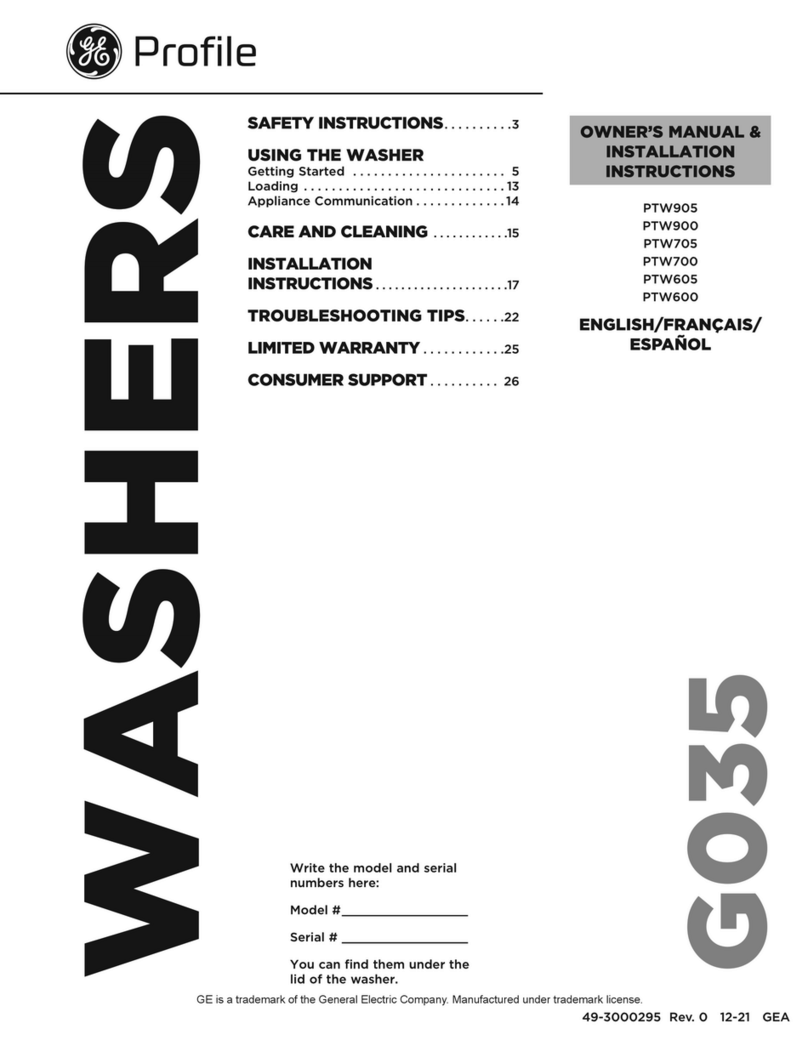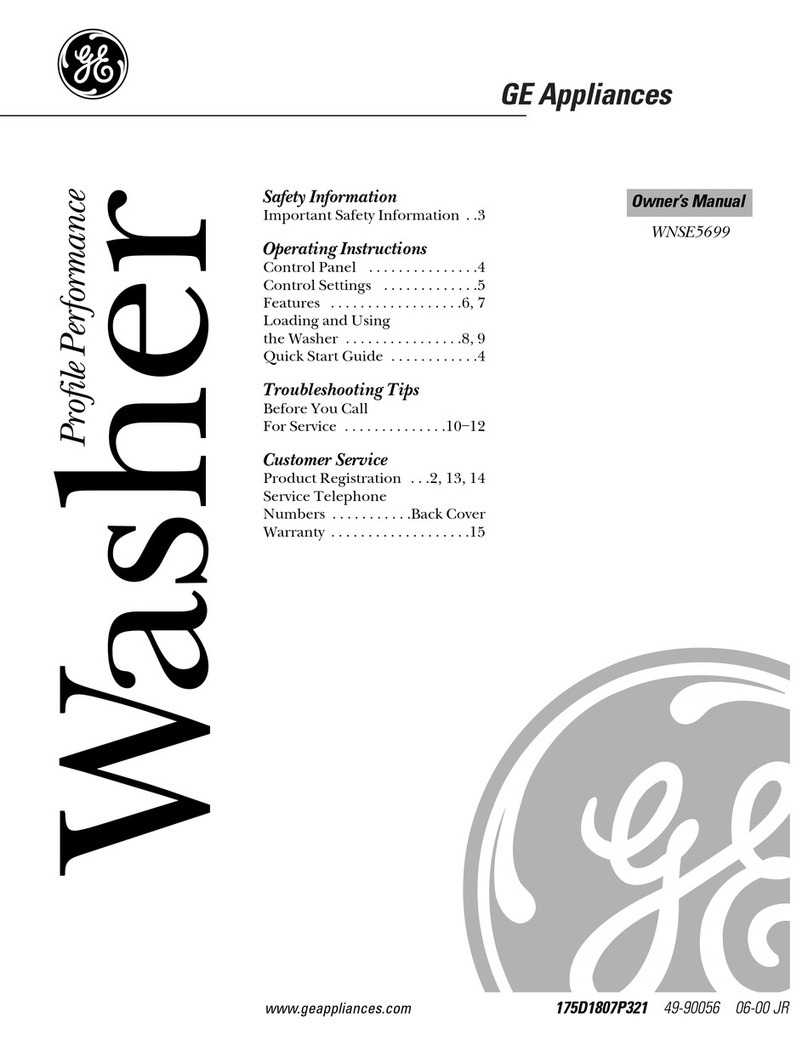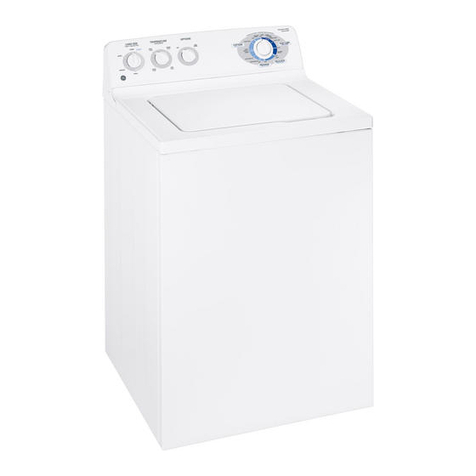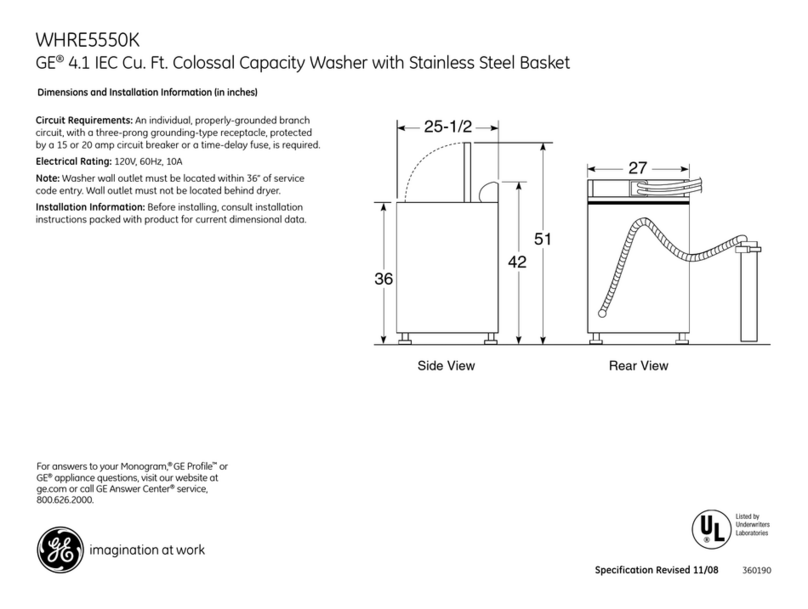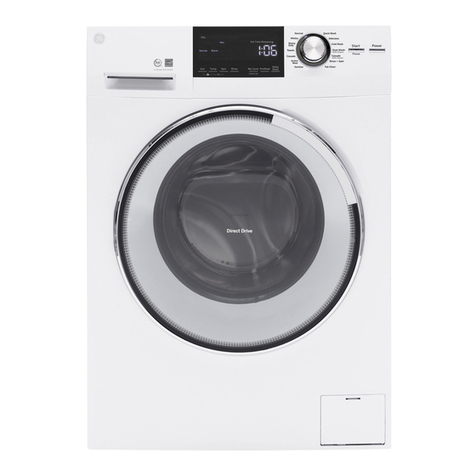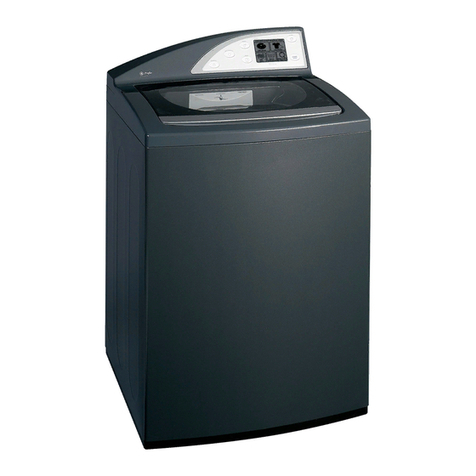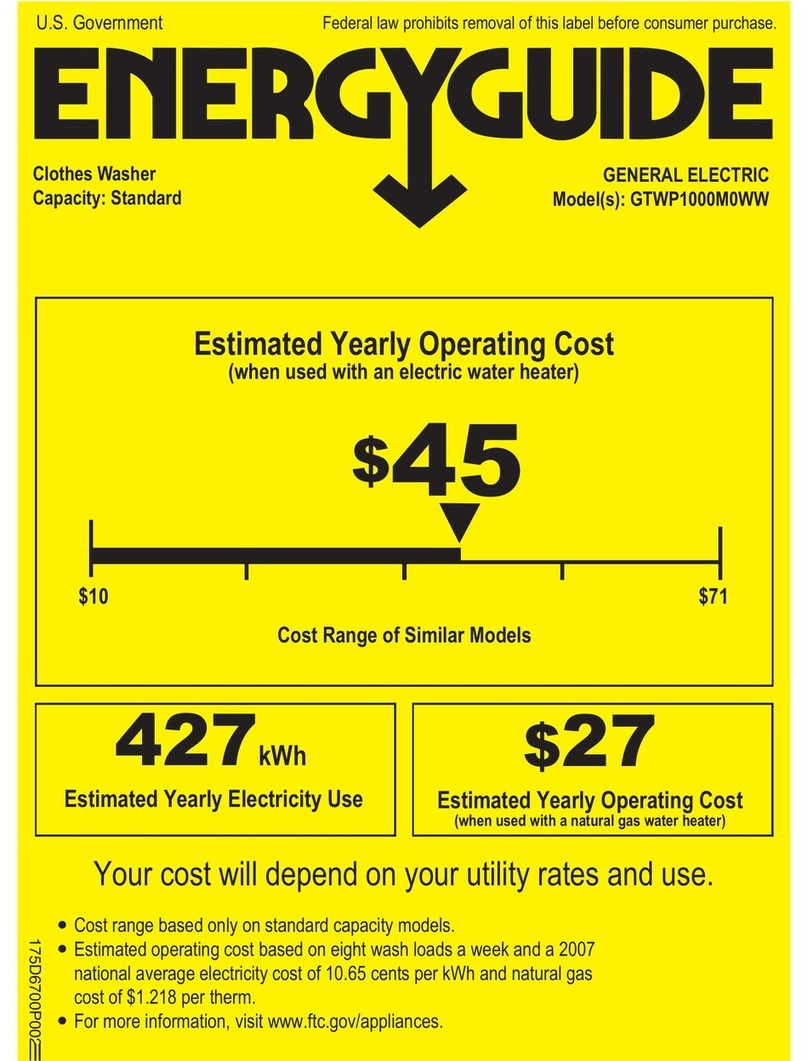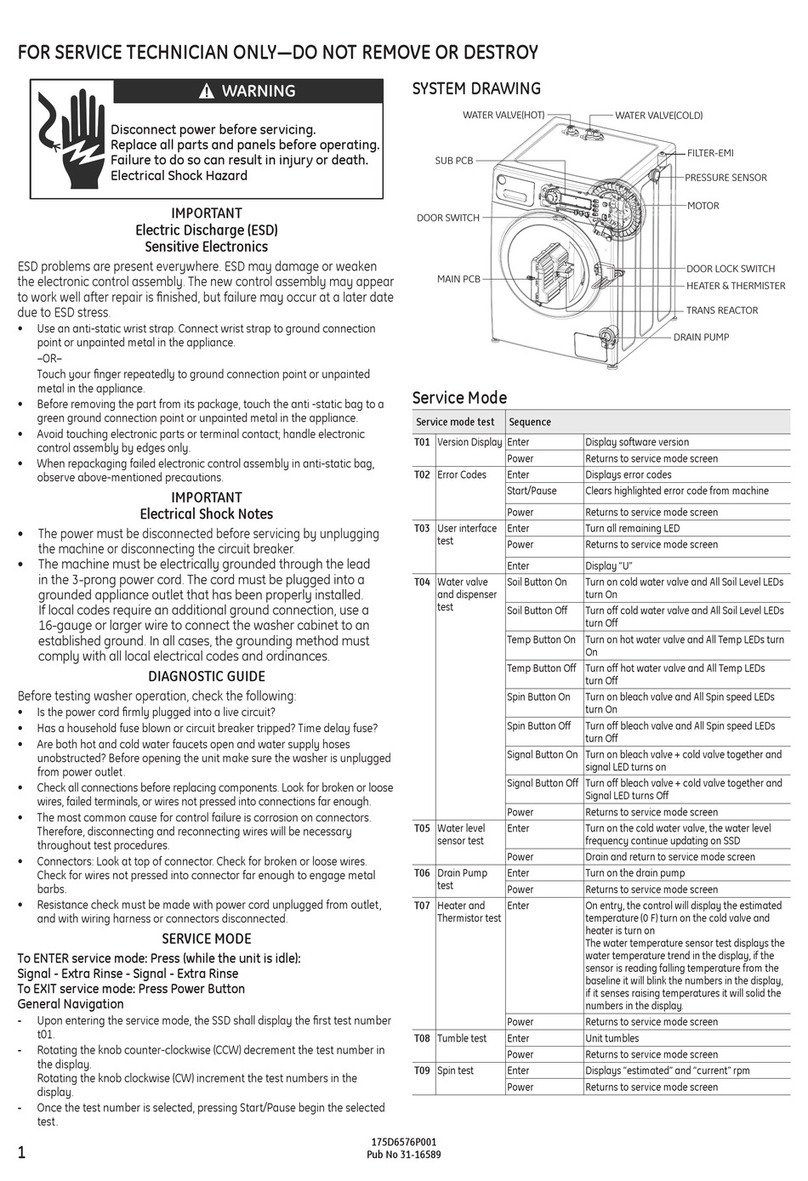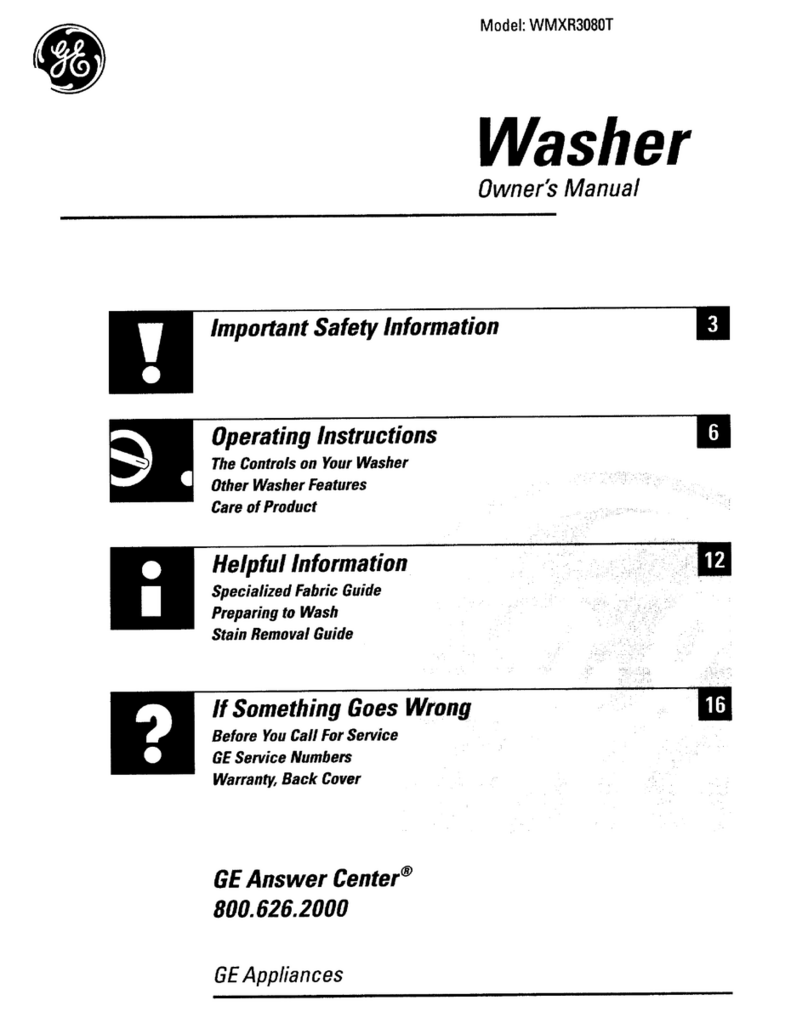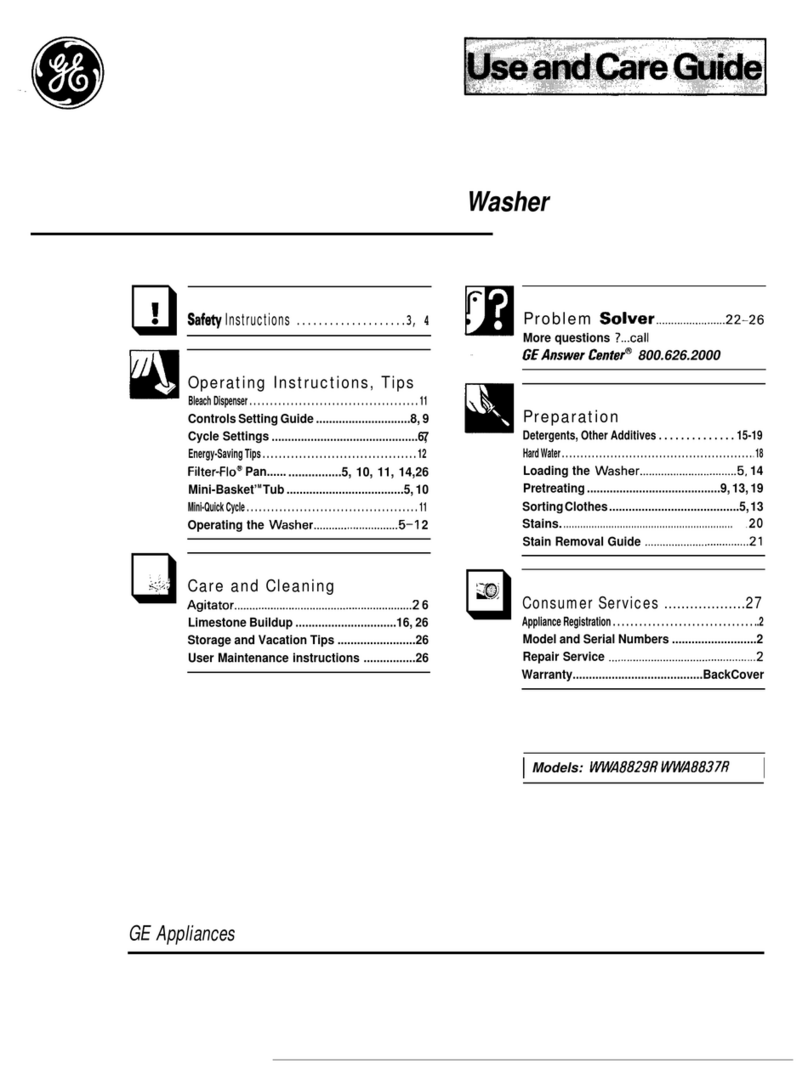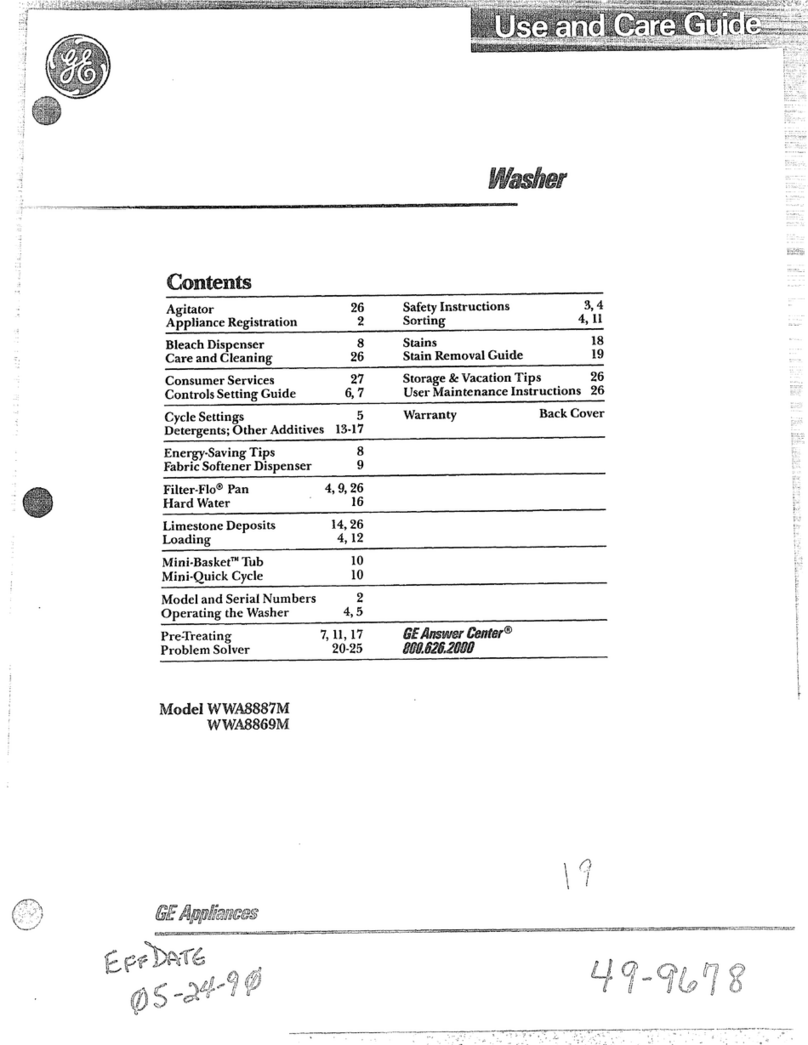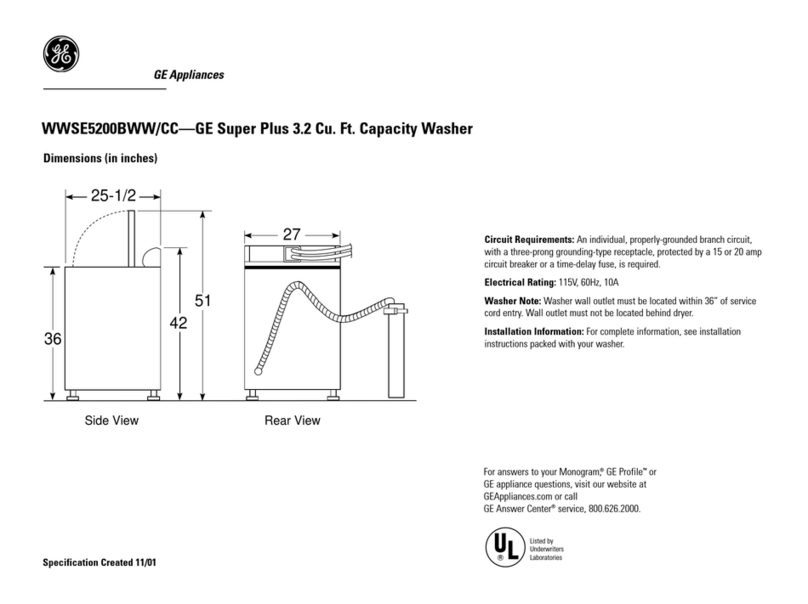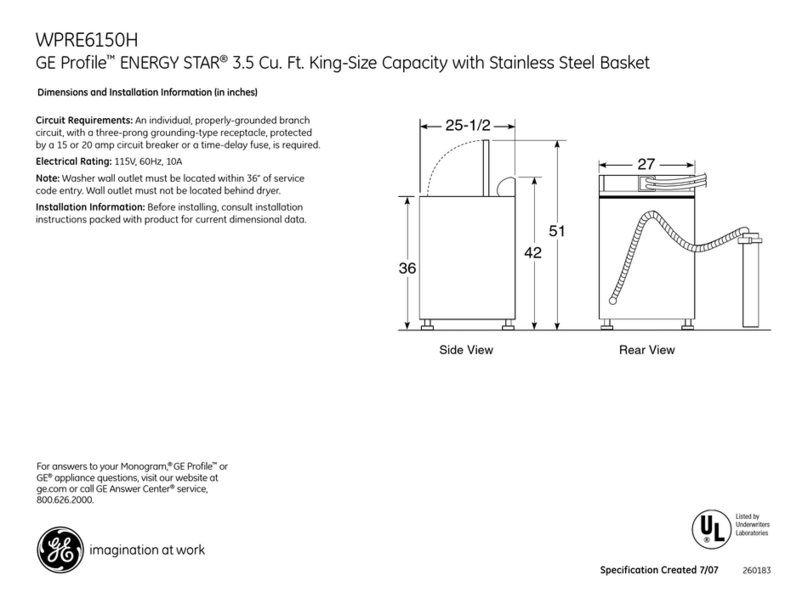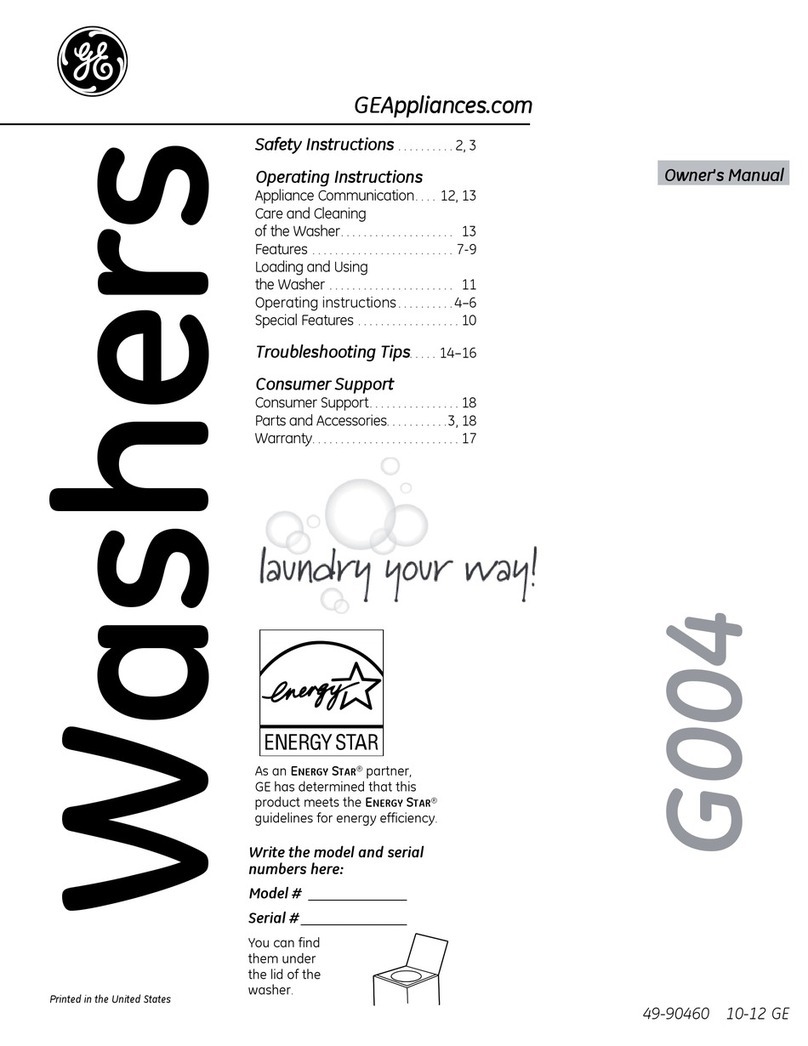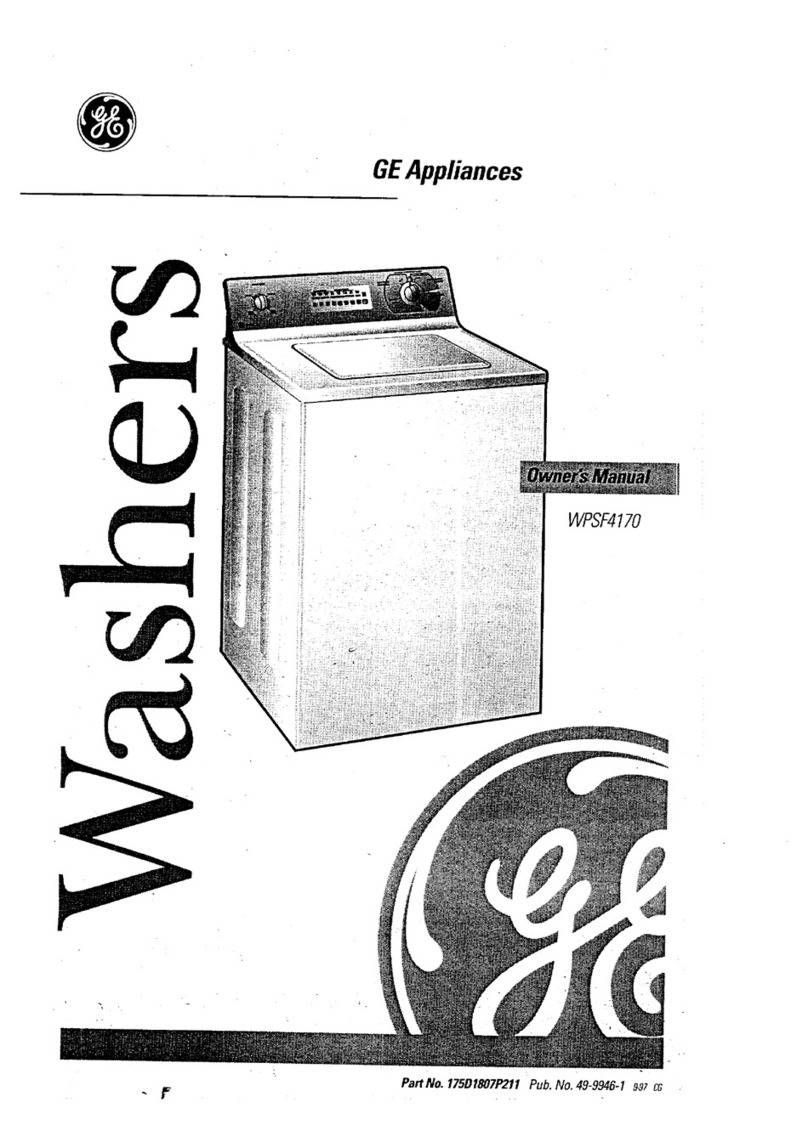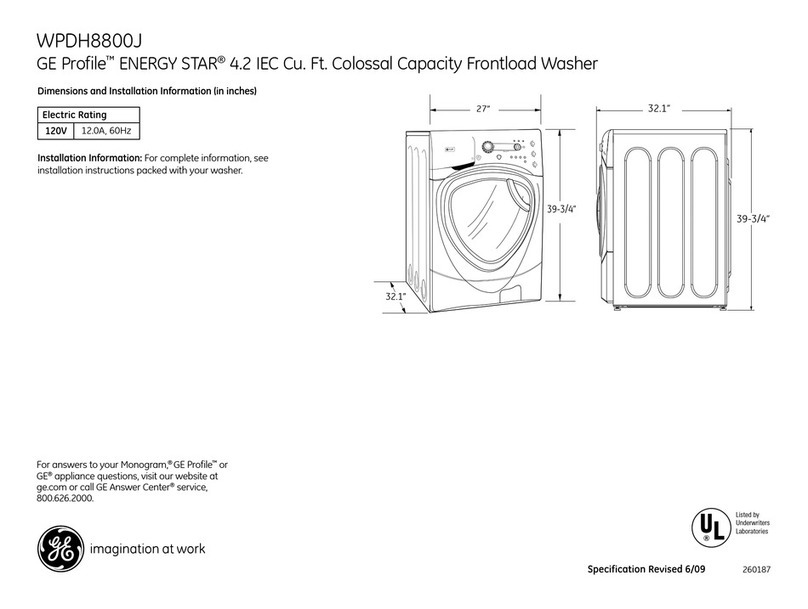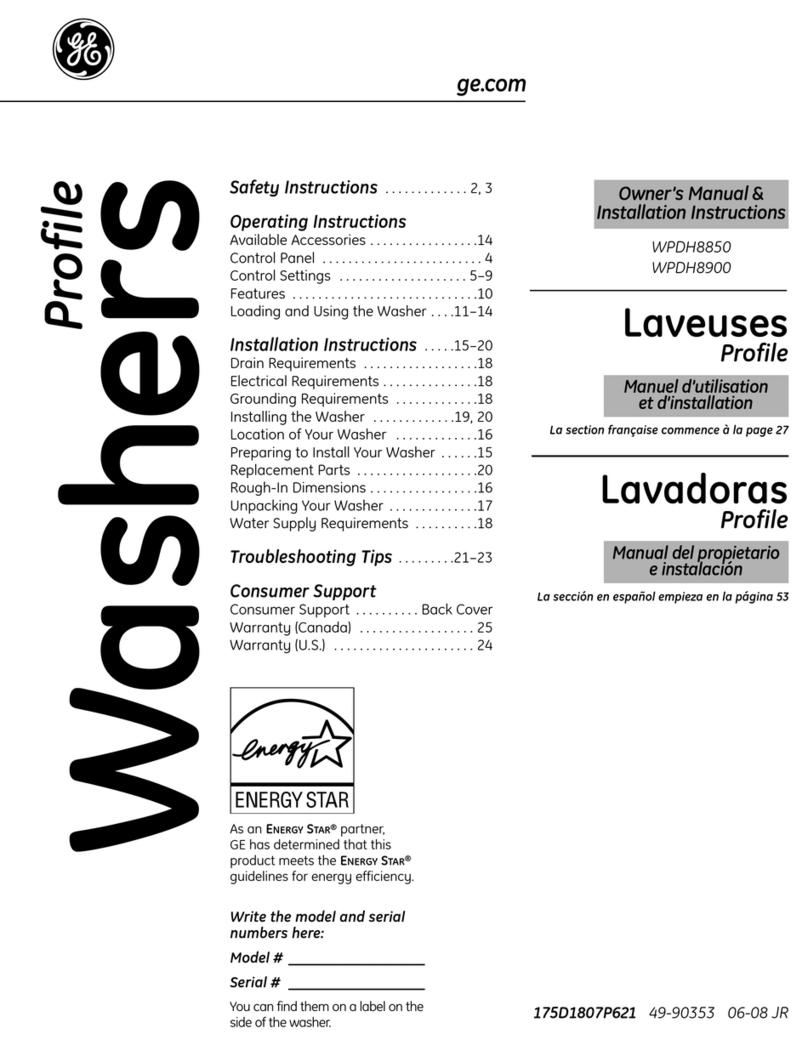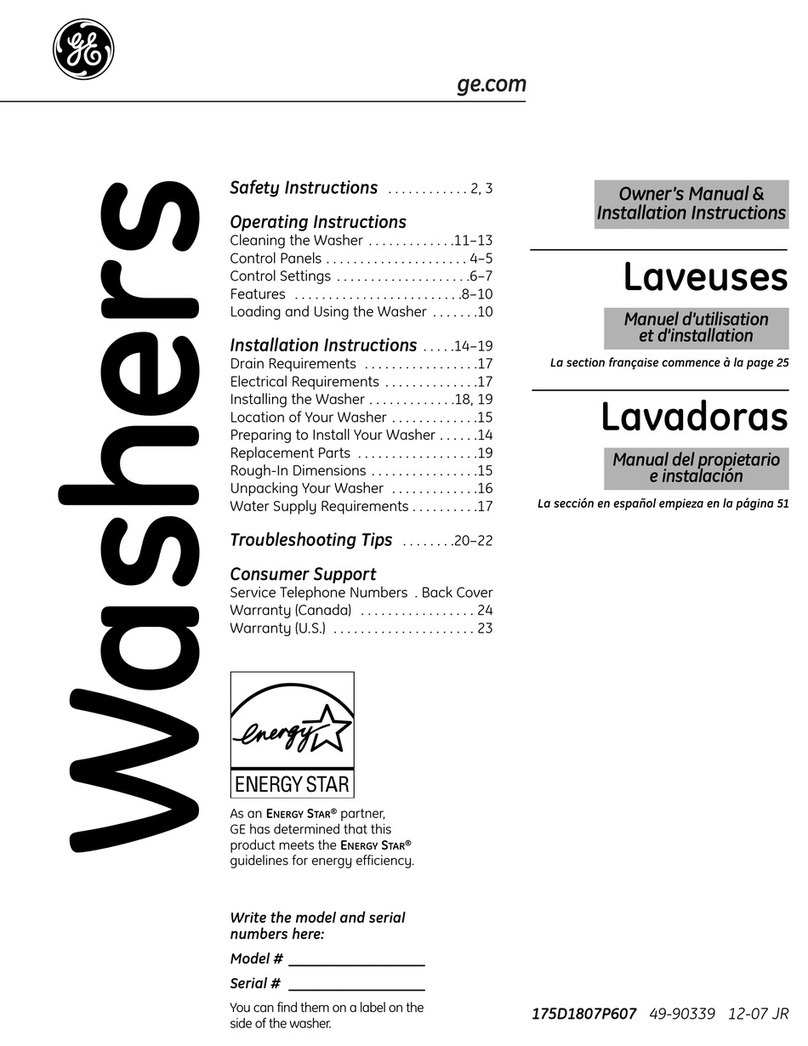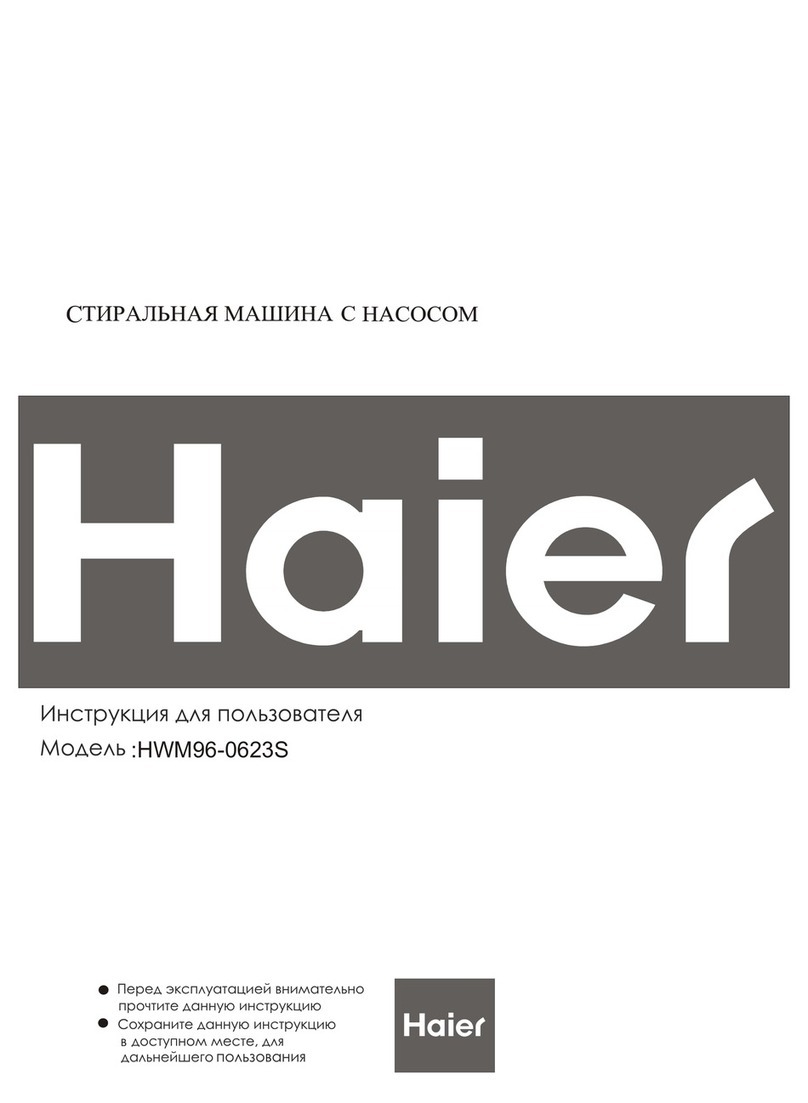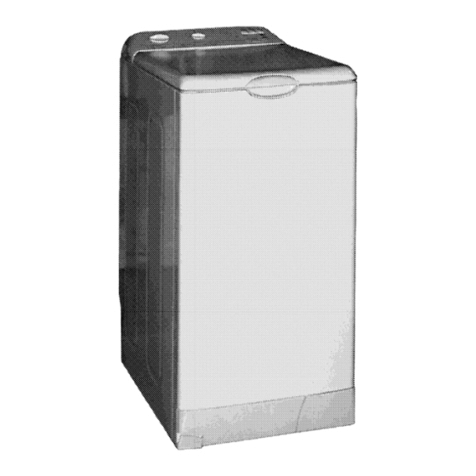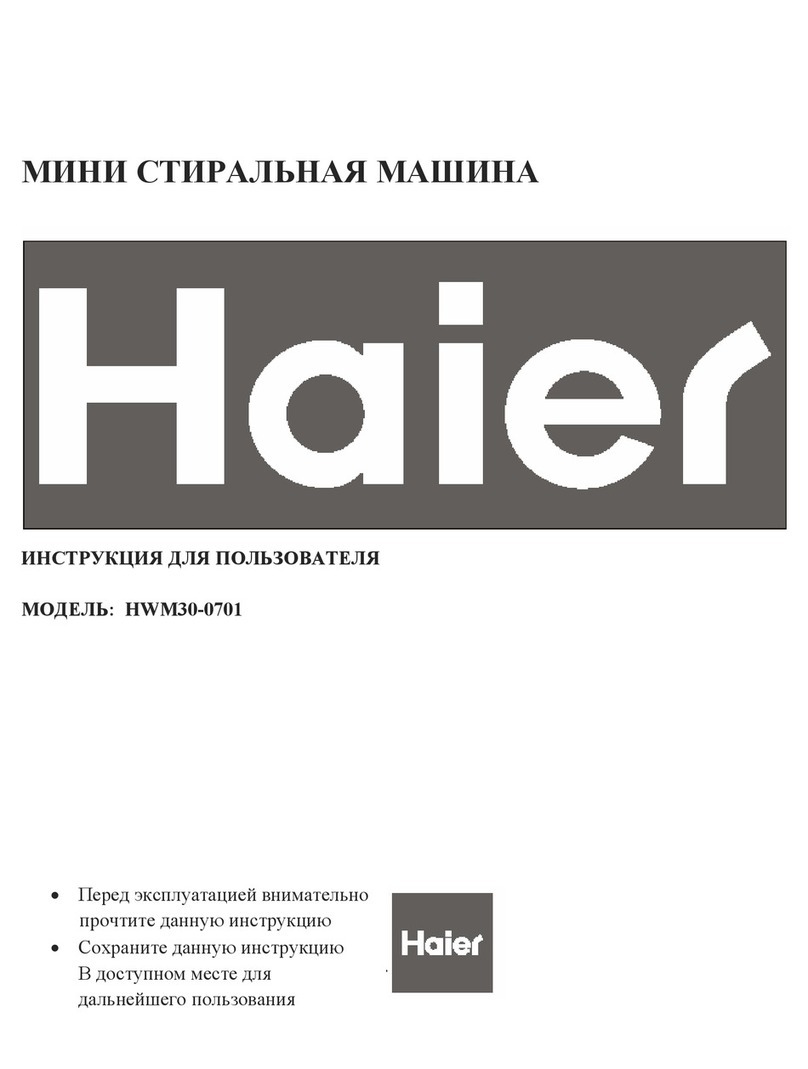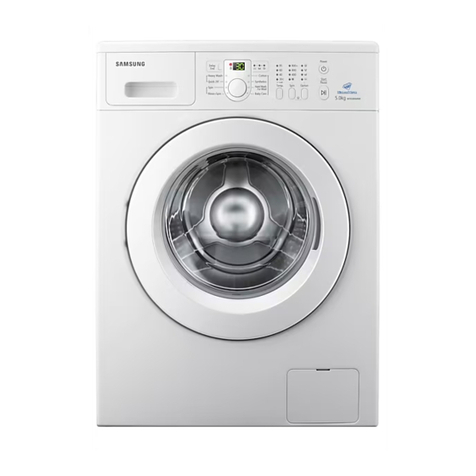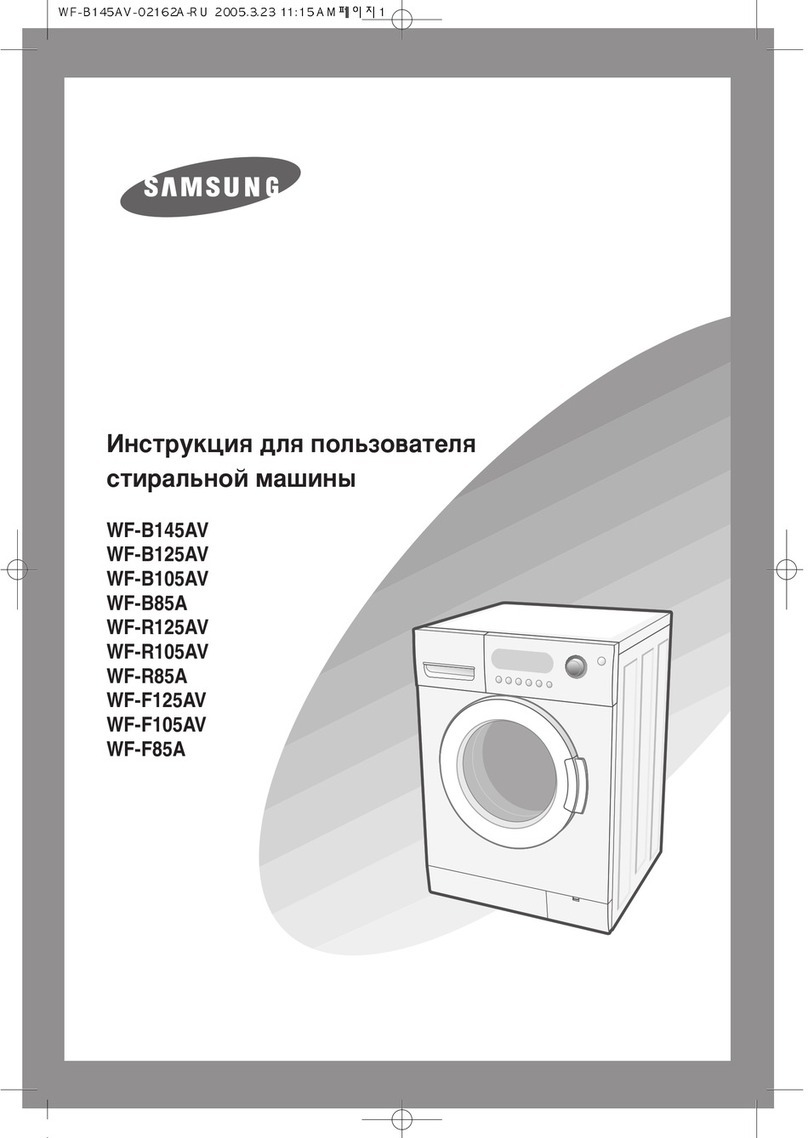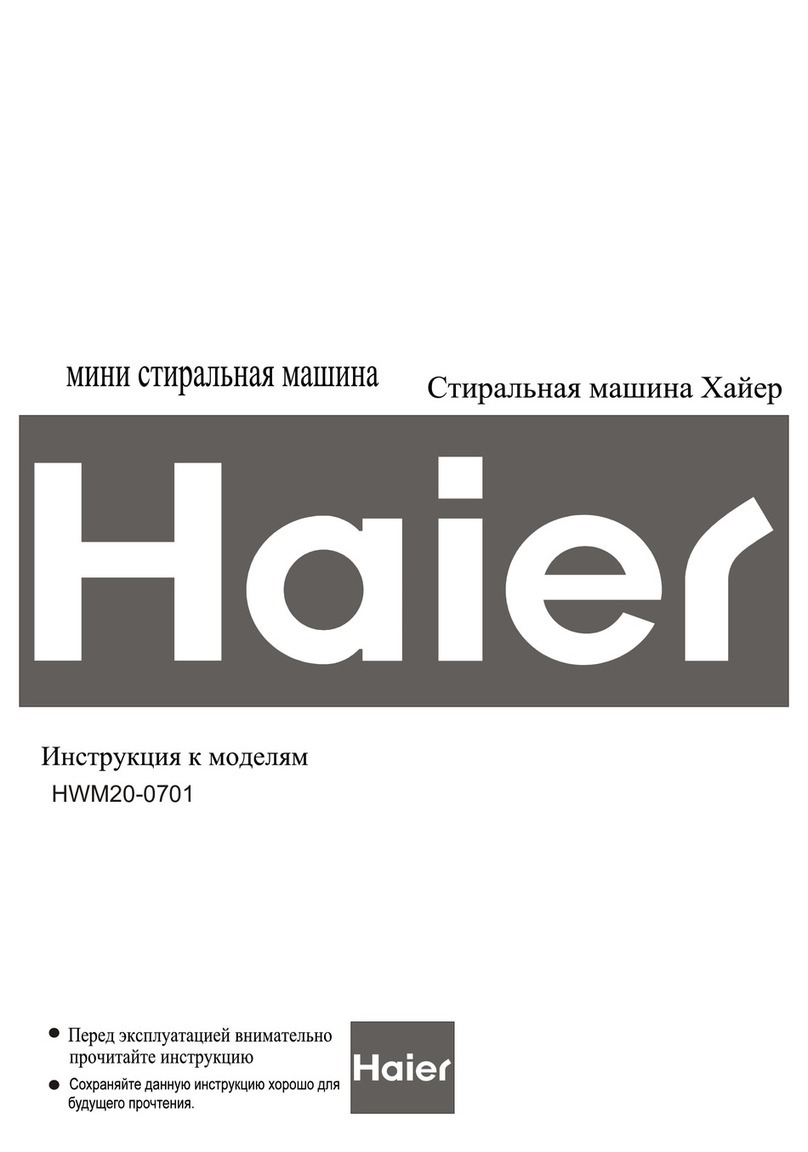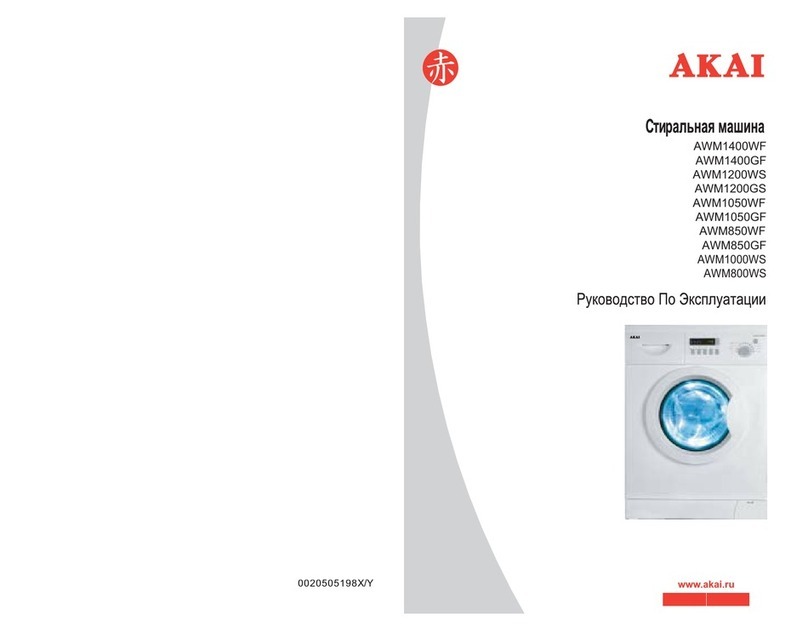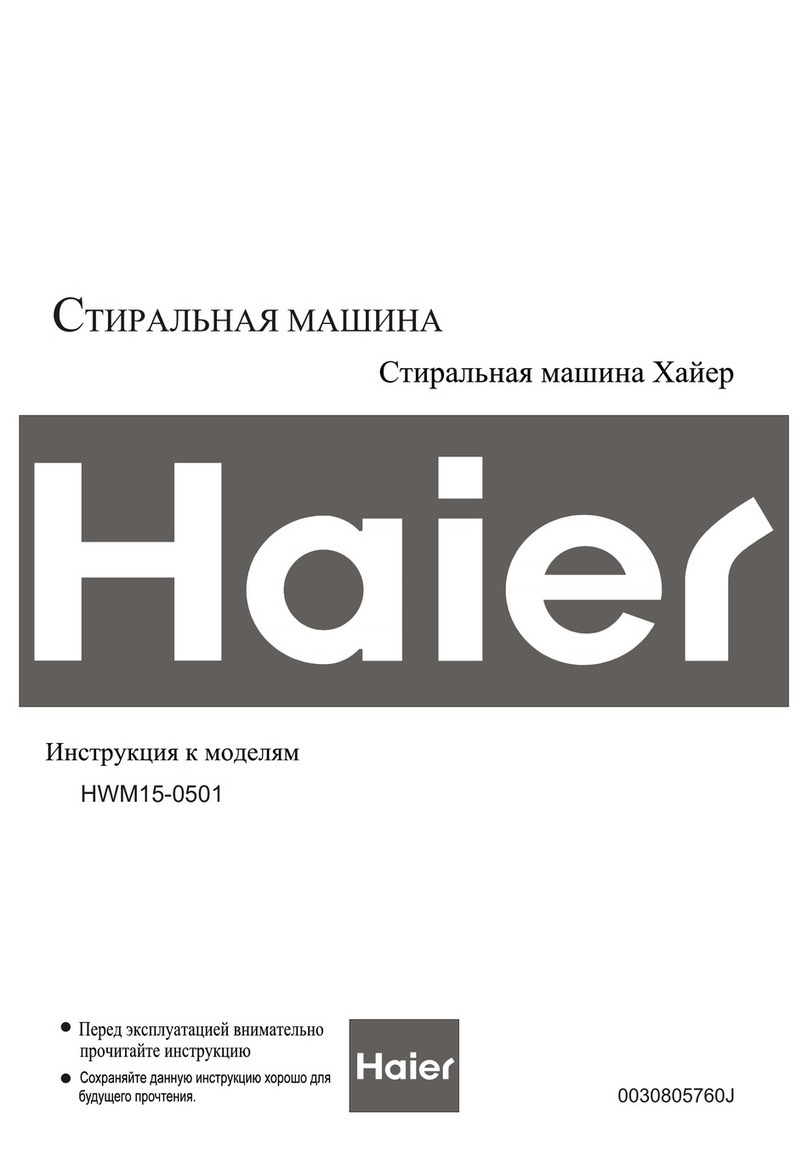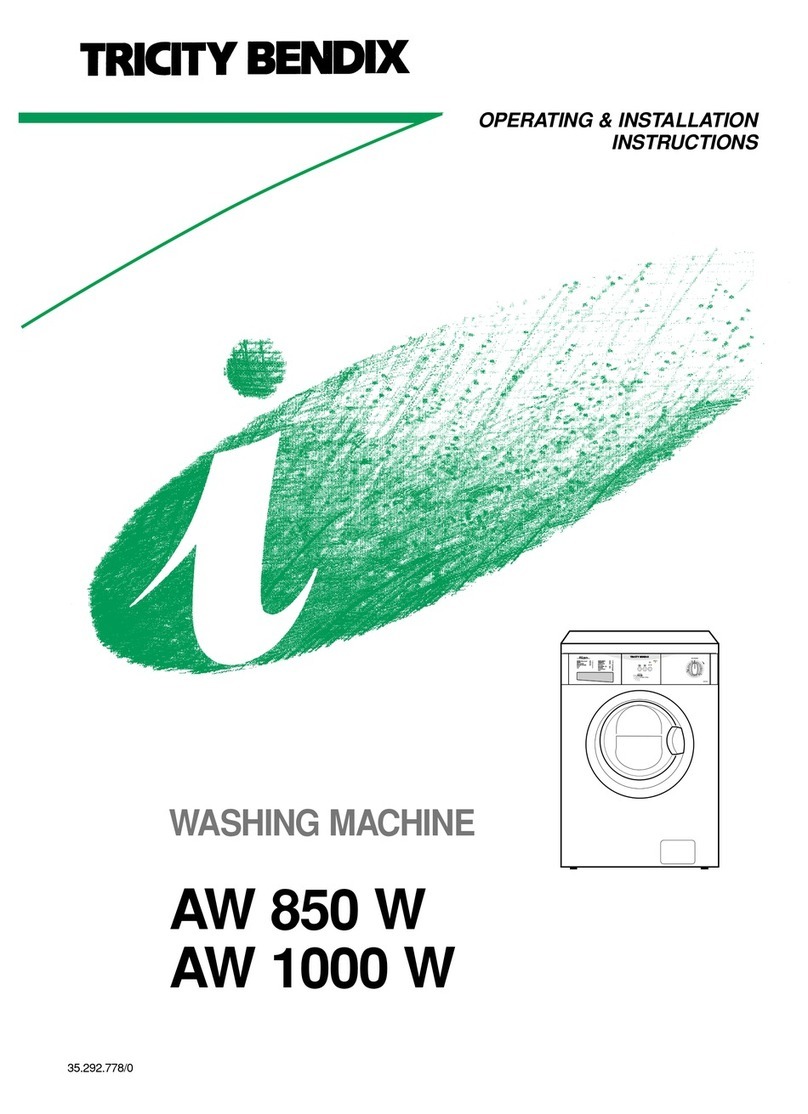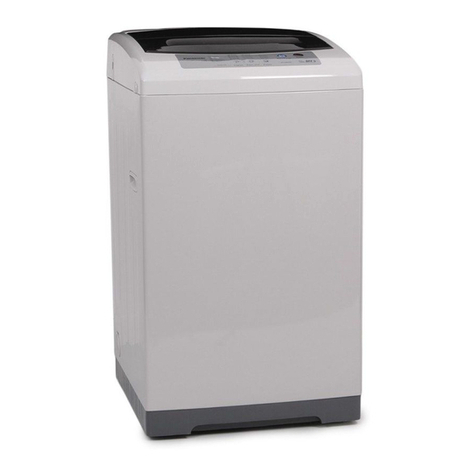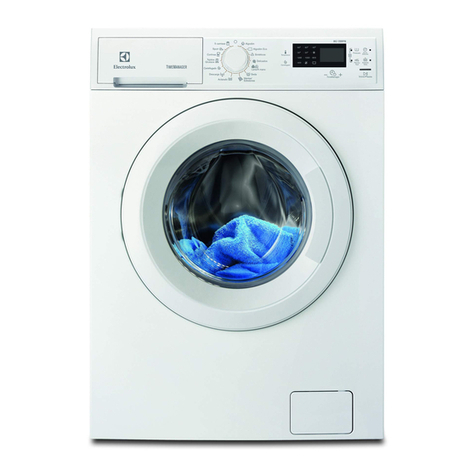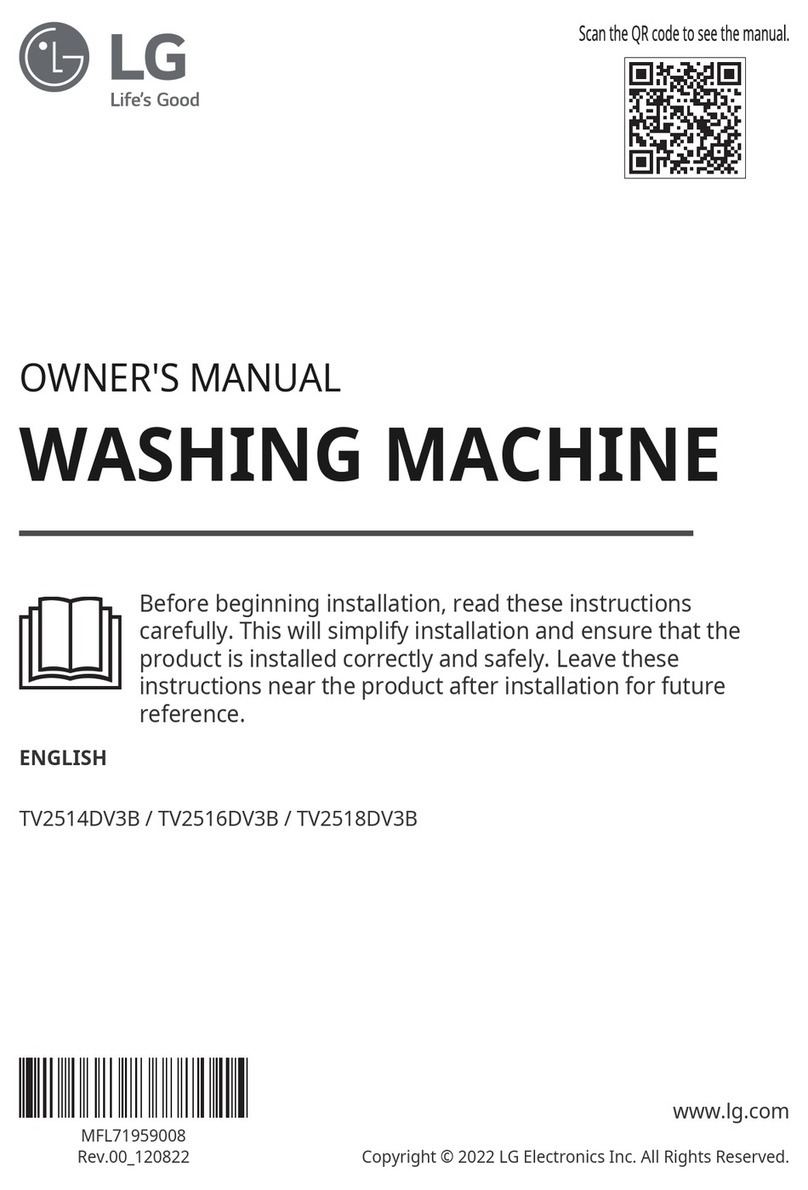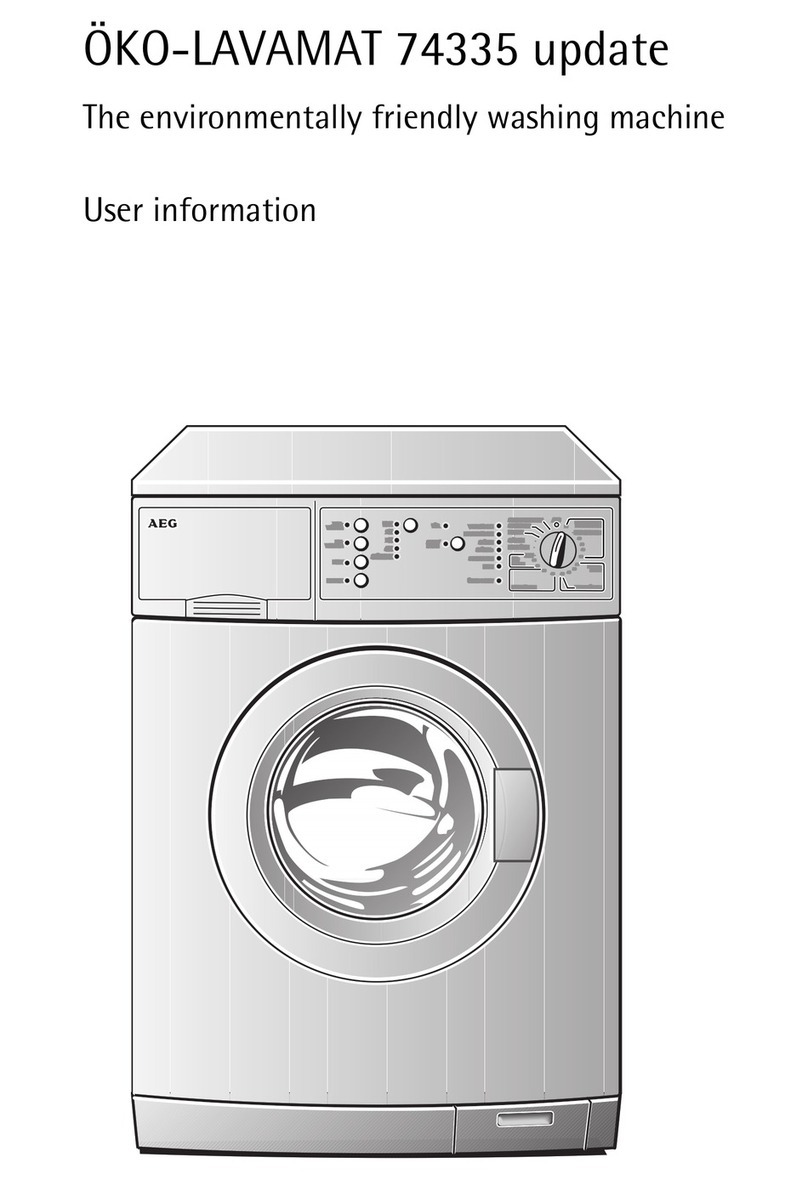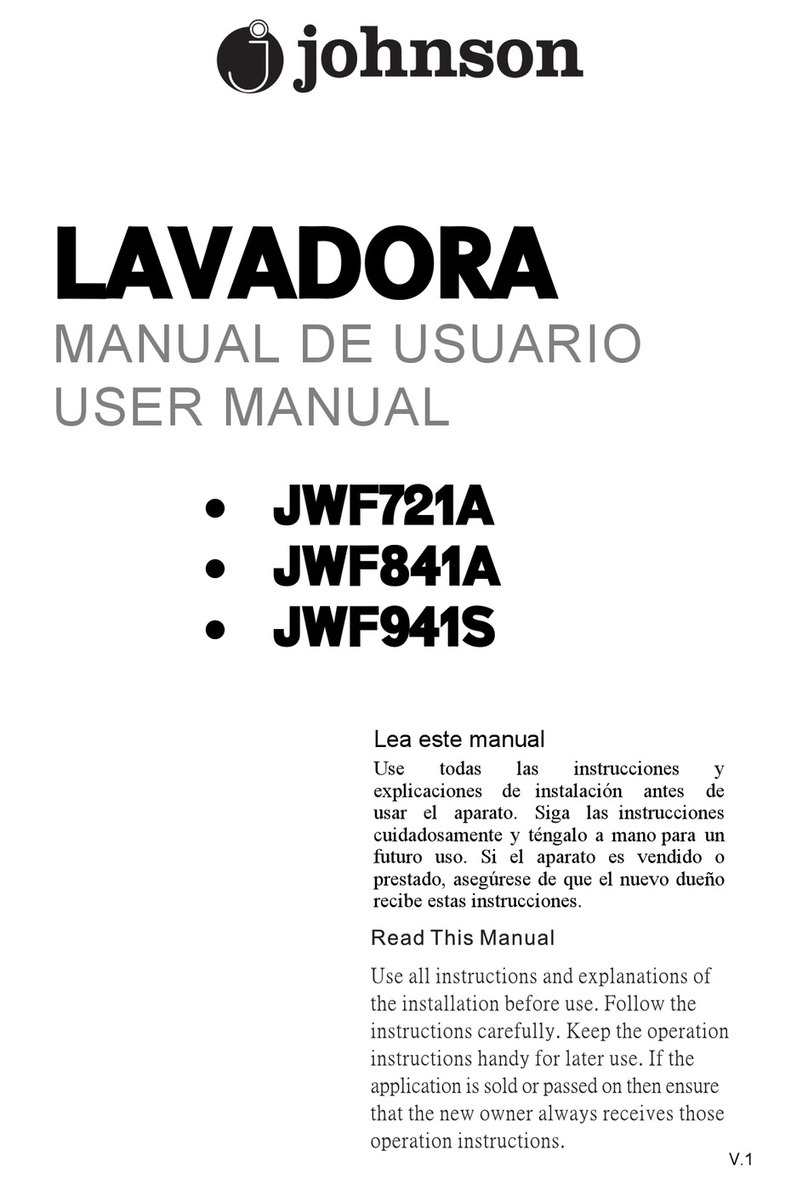Important SafetyInstructions–sAvE THESEINSTRUCTIONS ...
Readauinstructions beforeusing thisappliance ---L-------
—.-
--
?VARNING—When usingthis
appliance,alwaysexercisebasic
safetyprecautions,includingthe
following:
eLJsethisapphm? onlyforits
intended purpose as describedin
thisUse and Care Book.
@Thiswashermustbe propedy
installedand located in
fmordanw with the Installation
Instructions before it is used. If
youdid*notreceivean Installation
InstructIonssheetwithyour
washer,you can obtain oneby
contactingthe servicelocation
nearestyou.
-Properly ground to conform
withallgoverningcodes
and ordinances.
-Installor storewhereit willnot
beexposedto temperatures
belowfreezingor exposedto
the weather.
_-Connectto aproperlyrated,
protected and sizedpower-
supplycircuitto avoidelectrical
overload.
-Connectto adequate plumbing
and drain facilitiesas described
in the InstallationInstructions.
@Turn off waterfaucetswhenthe
washeris not in useto relieve
pressureon hosesand valves,and
to minimizeleakageif ahoseor
valveshould break or rupture.
~When disconnectingthis
appliancepullby the plug rather
[banthe cord to avoid damageto
thecord or junction of cord and
pkg. Makesure that the cord is
locatedso that it willnot be
steppedon, tripped over or
otherwisesubjectedto damage
or stress.
—
---
—
~Westronglyrecommendthat
any servicingbe performedby
aqualifiedindividual.
~The wiringdiagramfor this
machineislocatedinsidethe
controlpaneL
‘r-ominimize the possumy
of injury:
UIDo not mixchlorinebleachwith
ammoniaor acidssuchasvinegar
and/or rust remover.Mixingcan
produceatoxicgaswhichmay
causedeath.
@Do not washor dry articlesthat
havebeen cleanedin, washedin,
soakedin, or spottedwith
combustibleor explosive
substances(suchas gasoline,
degreasers,dry-cleaningsolvents,
kerosene,etc.) whichmaygiveoff
vaporsthat couldigniteor
explode.
Do not add thesesubstancesto the
washwater.
Do not usethesesubstances
around your washerand/or dryer
duringoperation.
@HYDROGEN GASisproduced
bythe chemicalactionwithinyour
water heaterand the gascan
accumulatein the waterheater
and/or waterpipesif hot waterhas
not beenused for aperiodof two
weeksor longer.HYDROGEN
GAS CAN BEEXPLOSIVE
UNDER THESE CH?CLJM-
STANCES.So to preventthe
possibilityof damageor injury,if
you havenot usedhot waterfor
two weeksor more, or moveinto
aresidencein whichthe hot water
systemmay not havebeenused for
sometime, turn on allhot water
faucetsand allowthem to run for
severalminutesbeforeusingany
electricalappliancewhichiscon-
nectedto the hot watersystem.
Thiswillallowany hydrogengas
to escape.Of course,sincethe gas
is flammable,do not smokeor use
an open flameor applianceduring
thisprocess.
*Neverreachinto the washer
whileit is moving.Beforeloading,
unloadingor addingclothes,push
in the CycleSelectorknob to
“STOP” position,then waituntil
the machinehas completely
stoppedbefore openingthe lid.
@Closesupervisionisnecessary
if thisapplianceisusedby or near
children.Do not allowchildrento
playinside,on, or withthisappli-
anceor any discardedappliance.
Disposeof discardedappliances
and shippingor packingmaterials
properly.Beforediscardinga
washeror removingfrom service,
removethe washerlid.
@Keepalllaundry aids(suchas
detergents,bleaches,fabricsof-
teners, etc.) out of thereach of
children,preferablyin alocked
cabinet. Observeallwarningson
containerlabelsto avoidpersonal
injury.
@Keepthe area around and under-
neath your appliancesfreefrom
the accumulationof combustible
materials, suchas lint, paper, rags,
chemicals,etc.
@Keepthe floor around your
appliancescleanand dry to reduce
the possibilityyof slipping.
@Tominimizethe possibilityof
electricshock, unplugthis appli-
ance from the power-supplybefore
attempting any maintenanceor
cleaning(exceptthe removaland
cleaningof the lint filter). NOTE:
Turningthe CycleSelectorknob to
an OFF positiondoesNOT dis-
connectthe appliancefrom the
power-supply.
Continued on nextpage
—
